12 Not So Obvious Hidden Features in Everyday Items
Nathan Johnson
Published
04/29/2024
in
wow
A lot of things go unnoticed in our daily lives. Small, butinteresting things. Some important, some not so much.
Like the fine print etched into the underside of our anti-lizardman amulets. It would've been nice to have caught that "*DOES NOT PREVENT LIZARDMAN ATTACKS" before our entire squad of interns found themselves locked inside wooden cages being carried to the Pyramid of Untold Sorrow. That would've been good to know .
- List View
- Player View
- Grid View
Advertisement
-
1.
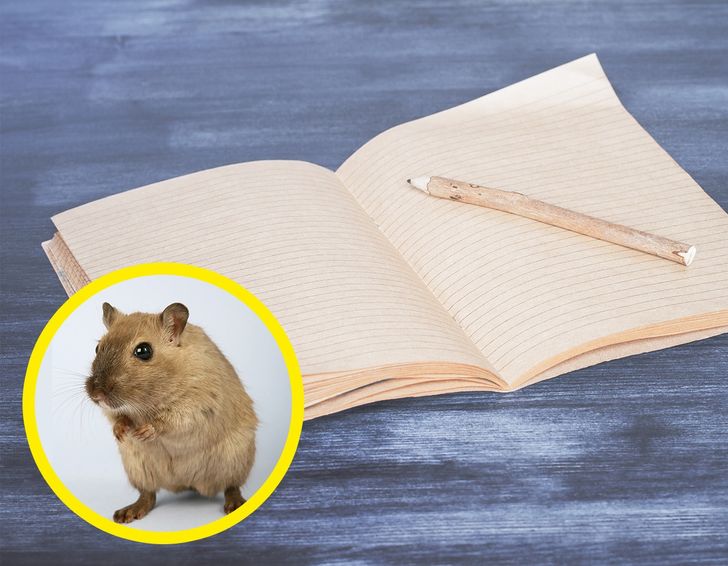 The margins on your notebook serve a purpose. Back in the day, writers would use every inch of paper to write on. However, they soon realized that rats would munch on the edges, eating away precious information. That’s why they came up with the idea to include margins that would keep the main body of writings safe, even if rats decided to snack on some paper. Obviously, nowadays these margins are often used by teachers to add notes to their students’ essays.
The margins on your notebook serve a purpose. Back in the day, writers would use every inch of paper to write on. However, they soon realized that rats would munch on the edges, eating away precious information. That’s why they came up with the idea to include margins that would keep the main body of writings safe, even if rats decided to snack on some paper. Obviously, nowadays these margins are often used by teachers to add notes to their students’ essays. -
2.
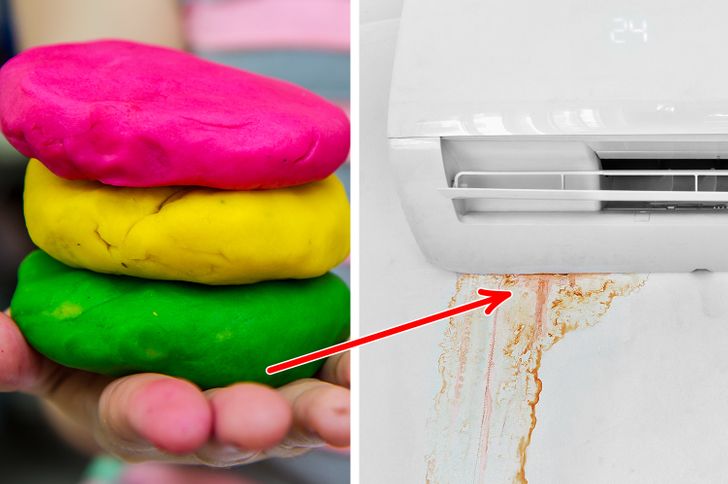 Play-Doh was originally used for cleaning purposes. During the 1920s, people were looking for something that would help them clean the soot their coal-burning furnaces were leaving on their wallpaper. This is when Play-Doh was invented for that purpose. It was sold exclusively in an off-white color and people would roll in back and forth over the dirt on their wallpaper. It was in 1949 that the product was marketed toward kids since there was a new and easier-to-use product for cleaning wallpaper.
Play-Doh was originally used for cleaning purposes. During the 1920s, people were looking for something that would help them clean the soot their coal-burning furnaces were leaving on their wallpaper. This is when Play-Doh was invented for that purpose. It was sold exclusively in an off-white color and people would roll in back and forth over the dirt on their wallpaper. It was in 1949 that the product was marketed toward kids since there was a new and easier-to-use product for cleaning wallpaper. -
3.
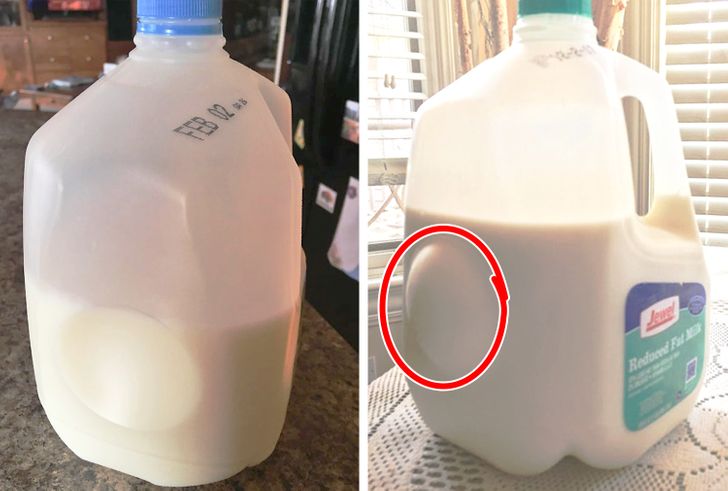 The round indentation on some milk jugs. Like all fresh food, milk goes bad after some time and after doing so it emits gases that can make the bottle flex. That’s where the circular indentation comes in handy since it absorbs the pressure from the gases. This is also useful if you need to freeze your milk, which will expand quite a bit while in the freezer. If it wasn’t for that small circle then your milk would explode in your fridge a few days after going bad.
The round indentation on some milk jugs. Like all fresh food, milk goes bad after some time and after doing so it emits gases that can make the bottle flex. That’s where the circular indentation comes in handy since it absorbs the pressure from the gases. This is also useful if you need to freeze your milk, which will expand quite a bit while in the freezer. If it wasn’t for that small circle then your milk would explode in your fridge a few days after going bad. -
4.
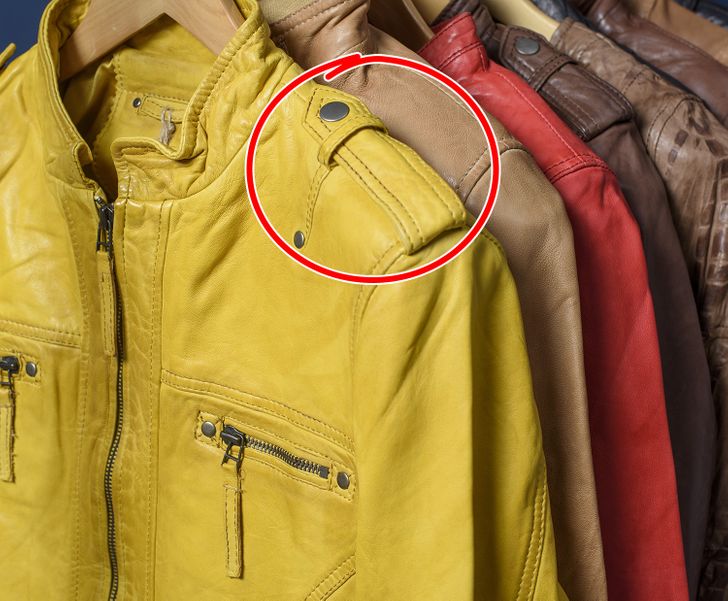 The straps on the shoulders of your leather jacket. These straps aren’t just there for decoration, but for something way more practical. They were designed to hold and secure your bag so it wouldn’t fall and so nobody could grab it from your shoulder. It also stays in one place and you don’t need to adjust it all the time. Past generations of people actually used these straps daily, but as years went by people stopped taking advantage of them.
The straps on the shoulders of your leather jacket. These straps aren’t just there for decoration, but for something way more practical. They were designed to hold and secure your bag so it wouldn’t fall and so nobody could grab it from your shoulder. It also stays in one place and you don’t need to adjust it all the time. Past generations of people actually used these straps daily, but as years went by people stopped taking advantage of them. -
5.
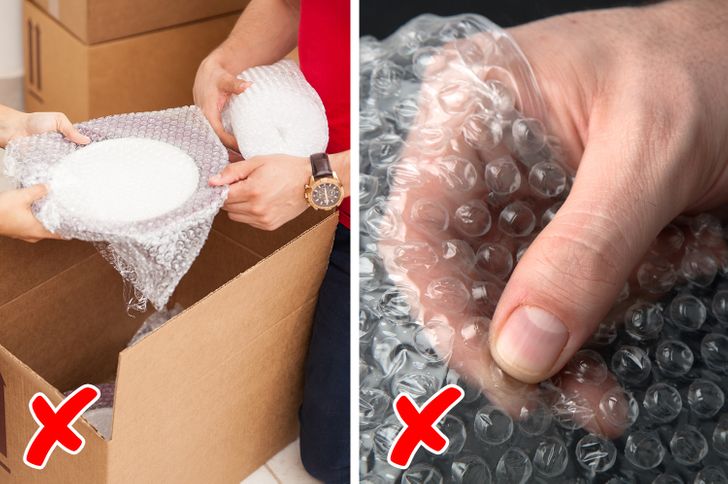 Bubble wrap was invented for a completely different reason. Bubble wrap was first designed in 1957 by 2 engineers who wanted to create a unique, textured wallpaper. This first idea flopped, so they thought about using their product for greenhouse insulation. When the alternative failed too, they decided to promote bubble wrap as a packaging material. From 1971, when they made $5 million with no clear profit, they went on to make $3 billion in 2000, in annual sales.
Bubble wrap was invented for a completely different reason. Bubble wrap was first designed in 1957 by 2 engineers who wanted to create a unique, textured wallpaper. This first idea flopped, so they thought about using their product for greenhouse insulation. When the alternative failed too, they decided to promote bubble wrap as a packaging material. From 1971, when they made $5 million with no clear profit, they went on to make $3 billion in 2000, in annual sales. -
6.
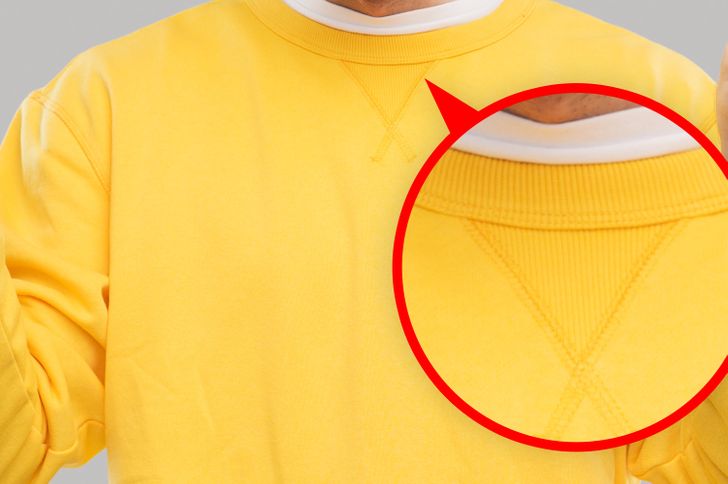 That V shape on your comfy sweatshirt. Initially, this V shape served 2 main purposes: first, it helped a sweatshirt maintain its shape throughout the years. It also helped the wearer fit their heads in the garment in case they needed to stretch it. Second, it absorbed the sweat that is mainly gathered around that area when a person is exercising. Currently, many companies have stopped using this small design, and those who still add it, use it mostly for decorative reasons.
That V shape on your comfy sweatshirt. Initially, this V shape served 2 main purposes: first, it helped a sweatshirt maintain its shape throughout the years. It also helped the wearer fit their heads in the garment in case they needed to stretch it. Second, it absorbed the sweat that is mainly gathered around that area when a person is exercising. Currently, many companies have stopped using this small design, and those who still add it, use it mostly for decorative reasons. -
7.
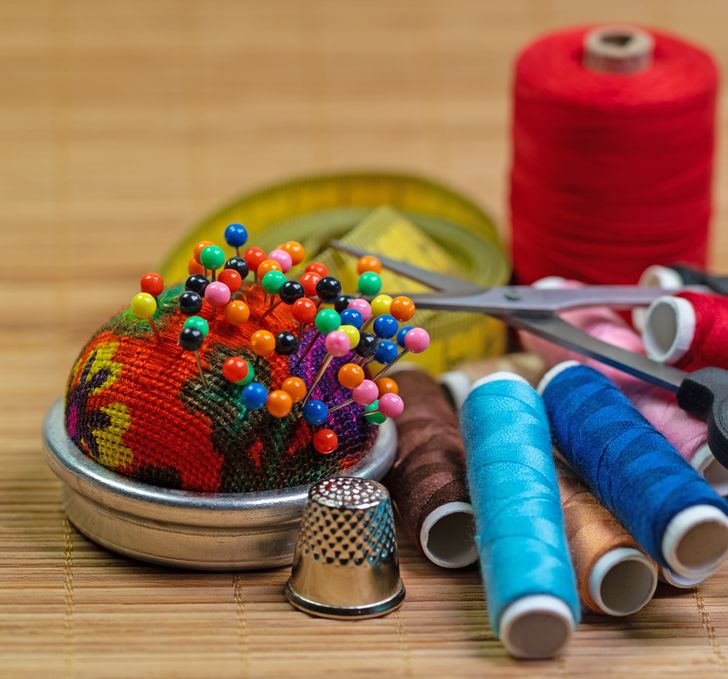 Pincushions aren’t just for pin and needle storage. One of the best materials to fill your pincushion with is steel wool, which is also very affordable. It not only keeps all your pins and needles in one place, but it also keeps them sharpened. It is also very rust-resistant and can keep your sewing equipment rust-free. However, you should be careful to not wet the pincushion, since the only thing that can grow rust on steel wool is water.
Pincushions aren’t just for pin and needle storage. One of the best materials to fill your pincushion with is steel wool, which is also very affordable. It not only keeps all your pins and needles in one place, but it also keeps them sharpened. It is also very rust-resistant and can keep your sewing equipment rust-free. However, you should be careful to not wet the pincushion, since the only thing that can grow rust on steel wool is water. -
8.
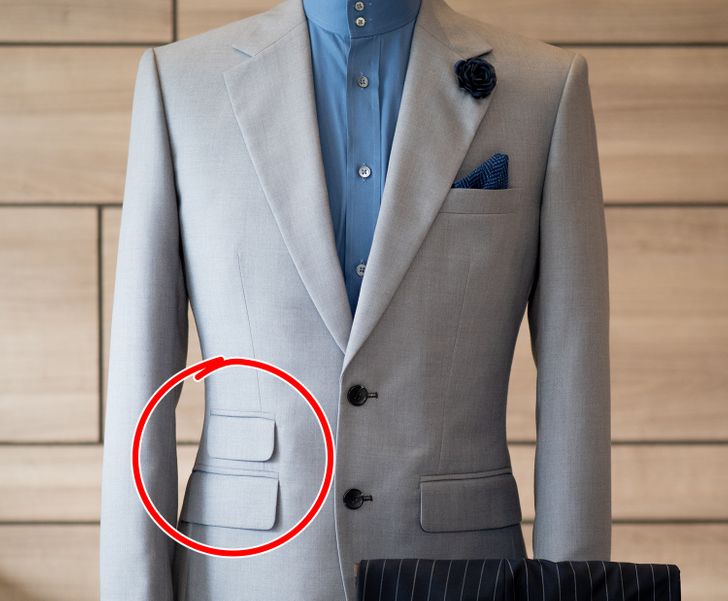 The 2 pockets on the right side of a dinner jacket. This mysterious little pocket goes back to England when equestrians needed a quick place to store coins for toll points. Later on, the pocket was used for men to keep their train tickets when they would travel to work every day. By using the pocket, they could still keep their jacket buttoned up. Nowadays, this small addition is only used for decorative reasons and doesn’t serve any practical purposes.
The 2 pockets on the right side of a dinner jacket. This mysterious little pocket goes back to England when equestrians needed a quick place to store coins for toll points. Later on, the pocket was used for men to keep their train tickets when they would travel to work every day. By using the pocket, they could still keep their jacket buttoned up. Nowadays, this small addition is only used for decorative reasons and doesn’t serve any practical purposes. -
9.
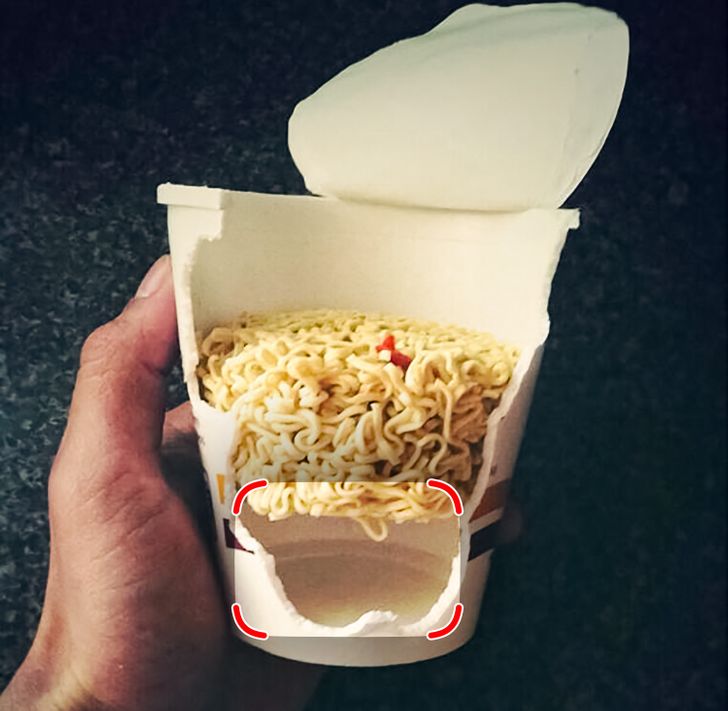 The empty space under noodles in a cup. This is not a way for companies to rip you off and make you think you are getting more noodles than you actually are. This is in fact a way that manufacturers keep the noodles safe during transportation. No matter how often or how hard the cups fall, the noodles inside stay intact. Also, this way the hot water can circulate better when you pour it over your noodles.
The empty space under noodles in a cup. This is not a way for companies to rip you off and make you think you are getting more noodles than you actually are. This is in fact a way that manufacturers keep the noodles safe during transportation. No matter how often or how hard the cups fall, the noodles inside stay intact. Also, this way the hot water can circulate better when you pour it over your noodles. -
10.
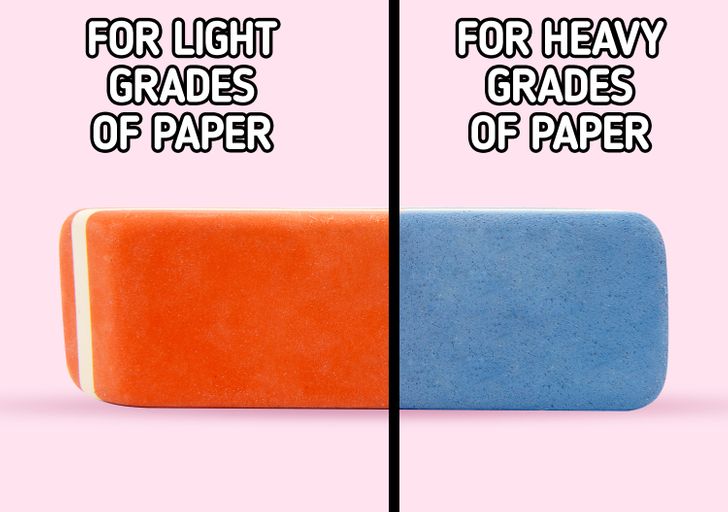 The blue part of an eraser was never meant for pens. Most of us were taught that the blue end is used to erase pen, something that has proven to be inaccurate. In reality, the hard blue side is used on heavy grades of paper while the light orange one, on light grades of paper. This makes perfect sense if you think about how the blue part would ruin a regular piece of paper when used on it. The orange part can also be used to erase small mistakes in between words where there isn’t very much space.
The blue part of an eraser was never meant for pens. Most of us were taught that the blue end is used to erase pen, something that has proven to be inaccurate. In reality, the hard blue side is used on heavy grades of paper while the light orange one, on light grades of paper. This makes perfect sense if you think about how the blue part would ruin a regular piece of paper when used on it. The orange part can also be used to erase small mistakes in between words where there isn’t very much space. -
11.
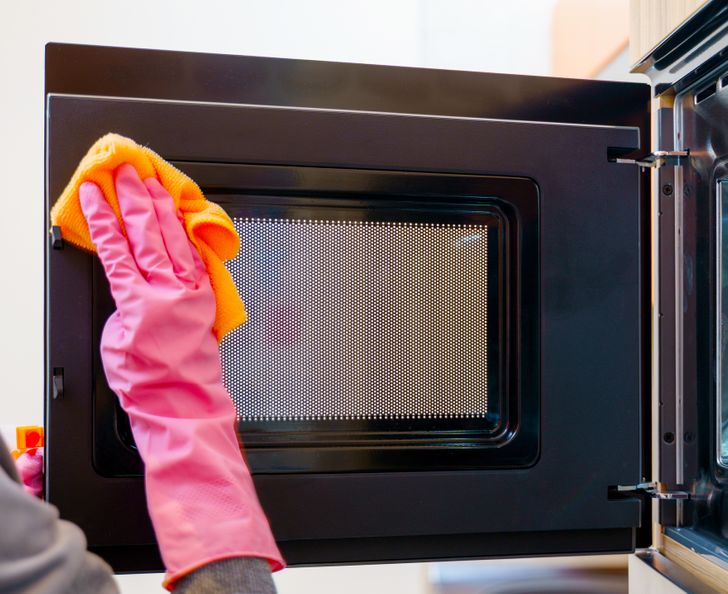 The microwave’s mesh door. Microwaves can heat up food so fast because they concentrate all their heat on your food using radiation. The mesh screens that are inside their doors reflect the microwave’s energy and prevent it from passing through the window. It also offers visibility inside the microwave so you know when something is not going according to plan.
The microwave’s mesh door. Microwaves can heat up food so fast because they concentrate all their heat on your food using radiation. The mesh screens that are inside their doors reflect the microwave’s energy and prevent it from passing through the window. It also offers visibility inside the microwave so you know when something is not going according to plan. -
12.
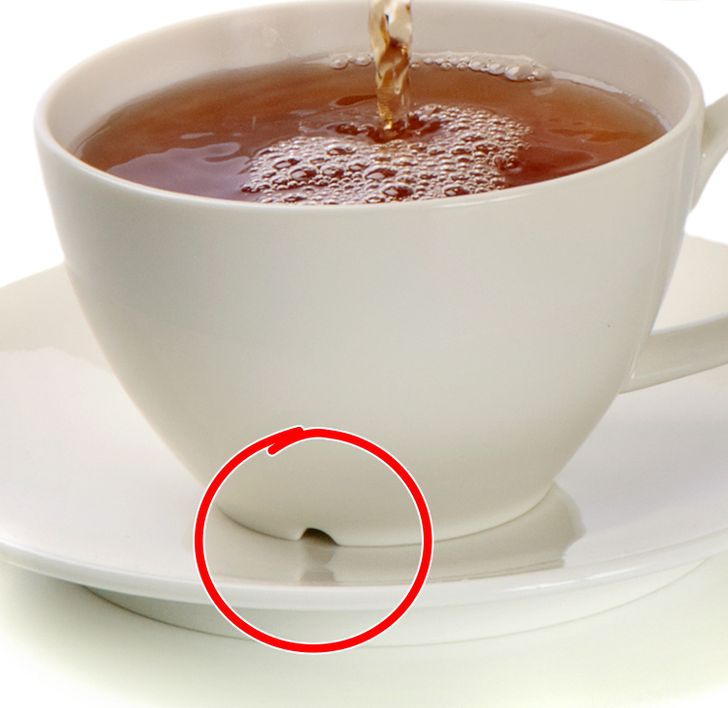 The small chips on the bottom of some cups. They might look like dents, but they do serve a very useful purpose. According to IKEA’s website, they are strategically placed there to help water drain easier after the wash. That’s because when you wash a cup and leave it upside down, there is always water concentrated on the bottom of the cup. So, with these small chips on the sides, water can exit easily and quickly.
The small chips on the bottom of some cups. They might look like dents, but they do serve a very useful purpose. According to IKEA’s website, they are strategically placed there to help water drain easier after the wash. That’s because when you wash a cup and leave it upside down, there is always water concentrated on the bottom of the cup. So, with these small chips on the sides, water can exit easily and quickly. -
13.
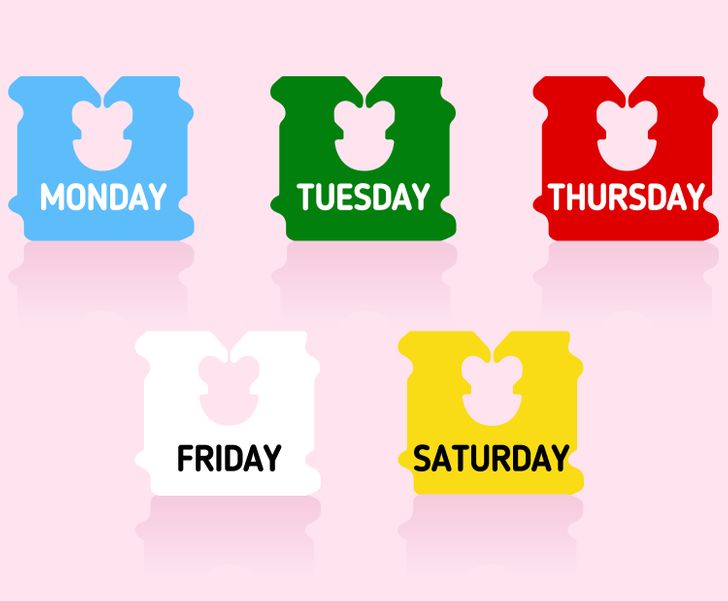 Tags on bread packages are there for a reason. Twist ties or tags come in 5 different colors representing 5 of the 7 days of the week. Blue is for Monday, green for Tuesday, red for Thursday, white for Friday, and yellow for Saturday. The reason Wednesday and Sunday are not included is that most shops don’t get deliveries on those 2 days. The different colors give the consumer a clear picture of how fresh the bread is so they know what to buy.
Tags on bread packages are there for a reason. Twist ties or tags come in 5 different colors representing 5 of the 7 days of the week. Blue is for Monday, green for Tuesday, red for Thursday, white for Friday, and yellow for Saturday. The reason Wednesday and Sunday are not included is that most shops don’t get deliveries on those 2 days. The different colors give the consumer a clear picture of how fresh the bread is so they know what to buy.
- REPLAY GALLERY
-
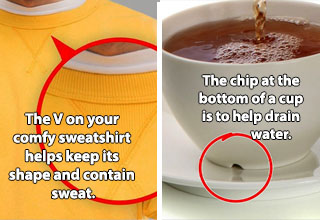
- 12 Not So Obvious Hidden Features in Everyday Items
The margins on your notebook serve a purpose. Back in the day, writers would use every inch of paper to write on. However, they soon realized that rats would munch on the edges, eating away precious information. That’s why they came up with the idea to include margins that would keep the main body of writings safe, even if rats decided to snack on some paper. Obviously, nowadays these margins are often used by teachers to add notes to their students’ essays.
13/13
1/13



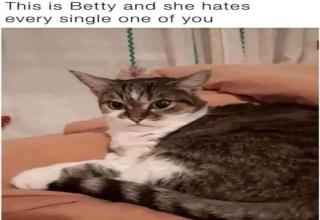


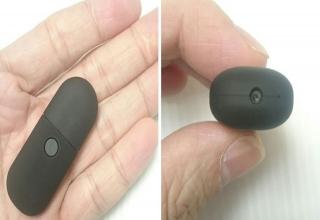

7 Comments